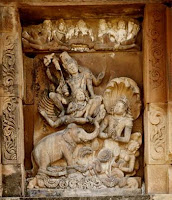Uttar Pradesh (UP)

UP Map Introduction With a tremendous population, U.P is India's most populous state and is considered to be the birthplace of Hinduism and has many important sites of Hindu pilgrimage. The Ganges , Hinduism's most sacred river, rises in Uttarakhand and flows through the state and it also houses the bathing ghats of Varanasi and Allahabad. which are India's most auspicious Kumbh Mela site. The state is also important to Buddhism since its early days and has some monuments untouched by time. The Taj - clicked by Sandeep kumar India's most famous Icon, the Taj Mahal and other Mughal monuments in Agra draws tourists, mesmerising them with their beauty. The Taj mahal stands on the banks of Hinduism's second holiest river, Yamuna. History During the British rule, some areas in Uttar pradesh were governed by English common law. In 1773 East India Company acquired the districts of Banaras and Ghaz




